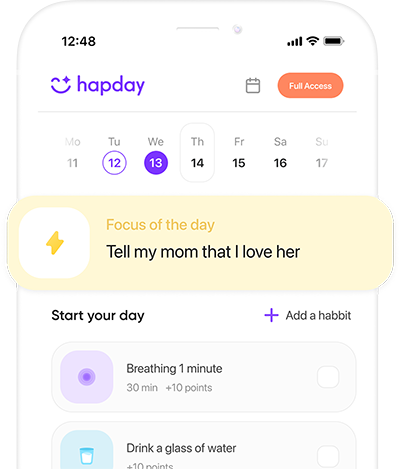Guilt is a sly intruder, insidiously entwining itself in our thoughts and actions—sometimes leaving us feeling ensnared in relentless self-reproach. For young women from Gen Z and Millennials, learning to escape guilt’s grip is crucial… especially in today’s expectation-laden world. Let’s delve into the psychological foundations of guilt, examine its effects on mental health, and consider practical steps toward nurturing self-compassion.
Table of Contents
- Understanding Guilt: A Double-Edged Sword
- The Different Faces of Guilt
- Guilt and Mental Health
- The Science of Self-Compassion
- Benefits of Self-Compassion
- Steps to Break Free from Guilt
- Breaking the Cycle: Real-Life Applications
- Conclusion
- References
Understanding Guilt: A Double-Edged Sword
As a human emotion, guilt has ancient roots—it served as a societal binder, curbing harmful behavior and promoting cooperation. Yet it becomes destructive when it morphs into unending self-blame. Back in 2007, the journal Emotion published a study by Tangney and others, revealing how guilt motivates positive social behaviors. But be warned: too much guilt is also connected to anxiety and depression.
The Different Faces of Guilt
- Healthy Guilt: This is the “good” guilt, emerging when personal or societal morals are breached. It propels us to make things right—apologies, amends—aligning actions with deep values.
- Unhealthy Guilt: Disproportionate to realities, unhealthy guilt thrives on unrealistic expectations or societal pressures. Instead of driving change, it spirals us into self-criticism.
Recognizing these distinctions is key. It helps separate guilt that promotes positive change from guilt that might need controlling.
Guilt and Mental Health
The nexus between guilt and mental health is stark—it’s a central theme in depression, anxiety, and obsessive-compulsive disorder, stuffiest say (Shapiro & Stewart, 2011). And Nolen-Hoeksema in 2008 showed how rumination, a common reaction to guilt, aggravates these problems.
The Science of Self-Compassion
Enter self-compassion. Popularized by Dr. Kristin Neff, it means treating oneself with the same kindness and understanding extended to a friend. Neff outlined its three core elements back in 2003:
- Self-kindness: Addressing oneself warmly during pain or failure.
- Common humanity: Acknowledging that missteps and suffering shape the universal human experience.
- Mindfulness: Observing painful thoughts and feelings without getting engulfed.
Benefits of Self-Compassion
The upside? Numerous studies endorse self-compassion’s benefits. A notable one by Neff and Germer in 2013 found that self-compassionate folks enjoy heightened psychological wellness, less anxiety and depression, and greater resilience.
Steps to Break Free from Guilt
Gaining release from guilt and embracing self-compassion? That’s a journey—a blend of cognitive and emotional shifts. Here’s a roadmap:
1. Identify and Acknowledge Your Guilt
First things first: pinpoint situations or thoughts that excite guilt. Journaling’s a savvy ally here. Jot down what’s inciting guilt, probe the underpinning reasons. Linked to a specific act, belief, or expectation?
Reflective Questions:
- Is the guilt based on reality or perception?
- What standards are swaying these feelings?
2. Challenge Unhealthy Guilt
Evaluating guilt’s validity follows. Cognitive-behavioral therapy (CBT) aids in challenging irrational thoughts, embracing balanced views. If taking self-care time stirs guilt, remind yourself: personal well-being is fundamental—to being your best self.
CBT Techniques:
- Cognitive Restructuring: Spot, then reshape cognitive distortions.
- Decatastrophizing: Ponder worst-case scenarios; assess their probability.
3. Practice Self-Kindness
When guilt creeps, consciously opt for self-kindness. It may feel odd—but it’s vital for breaking guilt’s cycle. Indulge in what’s comforting or brings joy, talk to yourself gently.
Self-Kindness Practices:
- Affirmations: Counter negative self-talk with positive statements.
- Nurturing Activities: Dive into hobbies or relaxation for rejuvenation.
4. Embrace Common Humanity
Everyone falters. Accepting this reality dilutes isolation. Share experiences with trusted friends or support groups for fresh perspectives: you’re definitely not alone.
Community Engagement:
- Join forums or groups promoting mental wellness.
- Exchange anecdotes and tips with others facing similar challenges.
5. Cultivate Mindfulness
Mindfulness, the art of staying present without judgment, helps observe guilt without it becoming self-defining.
Mindfulness Exercises:
- Meditation: Engage in guided meditations focused on self-compassion.
- Breathing Techniques: Use deep breathing during overwhelming moments to ground yourself.
6. Forgive Yourself
Forgiveness is a balm—for healing. Accept your flaws, past mistakes, yet commit to positive change. This undertaking takes time and patience.
Forgiveness Rituals:
- Scribble a forgiveness letter to yourself.
- Reflect on personal growth since the guilt-triggering incident.
7. Set Healthy Boundaries
Sometimes guilt comes from neglecting boundaries. Learn to say no—and prioritize your needs without guilt.
Boundary-Setting Tips:
- Clearly and assertively communicate limits.
- Practice saying no in low-risk scenarios to bolster confidence.
8. Seek Professional Help
Occasionally, guilt requires professional insight. Therapists offer tailored strategies to manage guilt and foster self-compassion. CBT, notably, excels in tackling guilt-centric notions.
Therapy Options:
- Individual Therapy: One-on-one exploration with a therapist.
- Group Therapy: Gain insight and support from peers in similar situations.
Breaking the Cycle: Real-Life Applications
Applying these steps means commitment and perseverance. Here are real-life illustrations showcasing these strategies in action:
Scenario 1: The Work-Life Balance Dilemma
Emma, 28, a marketing exec, feels a constant guilt for spending more time working than with family. By practicing self-kindness and mindfulness, she learns to manage her schedule efficiently—and set realistic expectations, easing her guilt.
Scenario 2: The “Perfect” Friend
Sophie, a 25-year-old student, battles guilt over not always being there for friends in crisis. Through cognitive restructuring, she challenges the notion of being perpetually available, realizing that setting boundaries ultimately enhances her friendships.
Scenario 3: The Self-Critic
Lily, a 30-year-old entrepreneur, wrestles with guilt over past business failures. She turns to journaling and forgiveness rituals, coming to value her resilience and viewing her journey as one of learning.
Conclusion
Liberating oneself from guilt is transformative—an intentional journey of self-reflection. By understanding guilt, practicing self-compassion, and implementing effective strategies, a healthier relationship with oneself and others beckons. Remember, self-compassion isn’t a destination—it’s an enduring practice, enriching mental well-being and personal growth.
Begin your self-compassion journey today. Discover more tools and support at Hapday.
References
- Tangney, J. P., Stuewig, J., & Mashek, D. J. (2007). Moral emotions and moral behavior. Annual Review of Psychology, 58, 345-372.
- Shapiro, D. H., & Stewart, W. (2011). The role of shame, guilt, and self-criticism in the development of depression and anxiety. Journal of Affective Disorders, 133(1-2), 142-149.
- Nolen-Hoeksema, S., Wisco, B. E., & Lyubomir


This article resonates with me deeply! I always thought guilt was just part of being human, but understanding the difference between healthy and unhealthy guilt is eye-opening. I’m going to start journaling to identify my triggers. Thanks for the helpful tips!
I’ve struggled with guilt for so long, and it’s exhausting! It’s interesting to see how self-compassion can change that narrative. I love the idea of setting boundaries; it feels empowering just thinking about it!
Totally agree! Setting boundaries is key. I used to feel guilty saying no, but now I see it as a form of self-respect.
Yes! Embracing common humanity really helps too. It’s comforting to know we’re not alone in feeling this way.
I find the concept of self-kindness a bit challenging—how do you start treating yourself like you would a friend? It’s something I want to work on, but I’m unsure where to begin.
@CuriousCharlie Start with small affirmations! They can help shift your mindset over time.
‘Forgiveness Rituals’ sounds intriguing! Writing a letter to myself might be cathartic—I can’t wait to try it out!
‘Breaking the cycle’ seems daunting at times, but these steps provide clarity on where to begin! I appreciate that you shared real-life examples—they make it all feel achievable.
‘Self-compassion’ sounds nice in theory, but isn’t that just making excuses for our mistakes? How do we ensure we’re not using it as a crutch?
‘Healthy Guilt vs Unhealthy Guilt’ is such an important distinction! It’s about finding balance—guilt can be motivating if channeled correctly.
What if guilt isn’t bad at all? Like, maybe it’s our brain’s way of telling us we’re capable of more? Just a thought!
So many great insights here! I’m especially intrigued by mindfulness practices; they seem like an effective way to observe my feelings without judgment!
This article is like a breath of fresh air! It encourages us all to embrace imperfection and prioritize our mental well-being—such an important message for everyone today!
This article is a breath of fresh air! The way it breaks down guilt and introduces self-compassion is incredibly enlightening. It’s so refreshing to see such a positive approach to mental health, especially for younger generations grappling with unrealistic expectations. I feel inspired to adopt some of these strategies in my daily life. Thank you for sharing such valuable insights!
While I appreciate the effort, this article feels overly simplistic. Guilt is not just something you can ‘manage’ with self-compassion and mindfulness exercises. It’s a complex emotion deeply rooted in personal and societal contexts. Suggesting that we can simply ‘break free’ from it seems a bit naive. Life isn’t that easy, and this piece doesn’t address the deeper issues at play.
This article does well in highlighting the psychological aspects of guilt, particularly its connection to mental health issues like anxiety and depression. The references to studies add credibility to the claims made about self-compassion being beneficial. It would be interesting to see more data on how different demographics experience guilt differently—especially across cultures.
I agree, FactFinder99! Additionally, understanding how cultural backgrounds shape our perception of guilt could enrich this discussion even further.
Absolutely! Including more research on demographic differences would make this topic even more relevant, especially in an increasingly globalized world.
‘Healthy guilt vs unhealthy guilt’—this concept really resonates with me. It’s crucial for people to distinguish between the two as it can significantly impact their mental well-being. I appreciate how the article provides actionable steps toward fostering self-kindness as a tool for breaking free from crippling guilt.
‘Healthy guilt’ being a motivator is something many people overlook! This distinction can lead to personal growth if understood properly.
‘Set Healthy Boundaries’? That sounds like something we should all have tattooed on our foreheads at this point! Maybe then we wouldn’t feel guilty about saying ‘no’ once in a while. But honestly, who needs therapy when you have articles like these? Just kidding—it does have some useful tips!
The advice here seems too easy and convenient for something as heavy as guilt. Sure, practicing self-kindness sounds great on paper, but what if someone has been conditioned their whole life to feel guilty? Just because it’s written here doesn’t mean it’s an easy fix or will work for everyone.
You’re right, SkepticalSammy! It’s crucial to understand that individual experiences with guilt vary widely; one size definitely does not fit all.
Yes, while these tips are helpful as guidelines, real change often requires deep work that isn’t covered here.
So we’re supposed to just ‘forgive ourselves’? Sure! I’ll just add that one onto my list right next to ‘Become a billionaire’ and ‘Learn how to fly.’ But seriously folks, good luck getting over years of ingrained feelings—it’s going to take more than just a couple of affirmations!
ComedicCarl makes an excellent point! Sometimes it feels like we’re expected to wave a magic wand over our emotions and voila!
Exactly! If only self-forgiveness came with an instruction manual or maybe a magic potion!